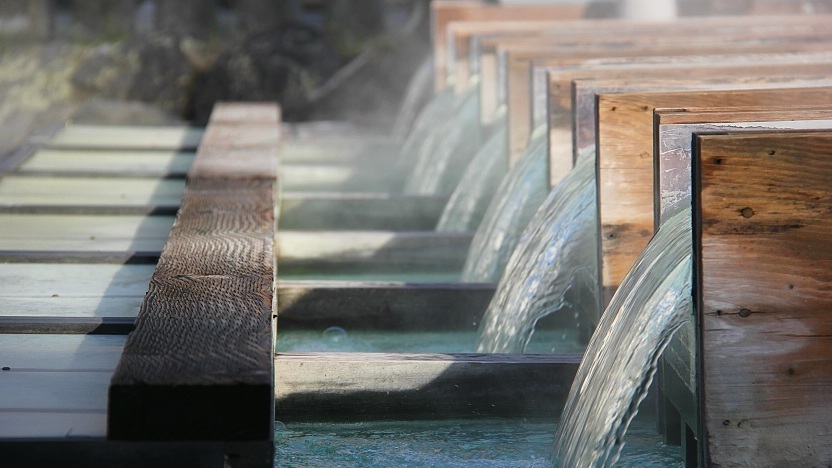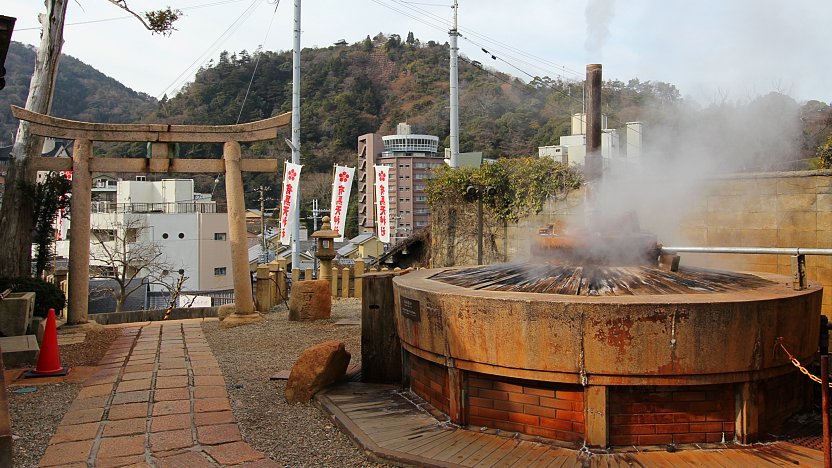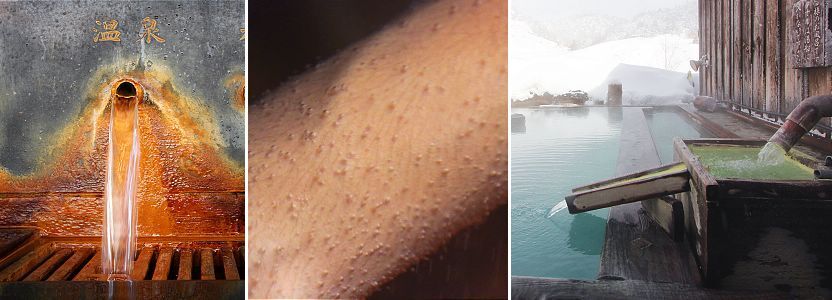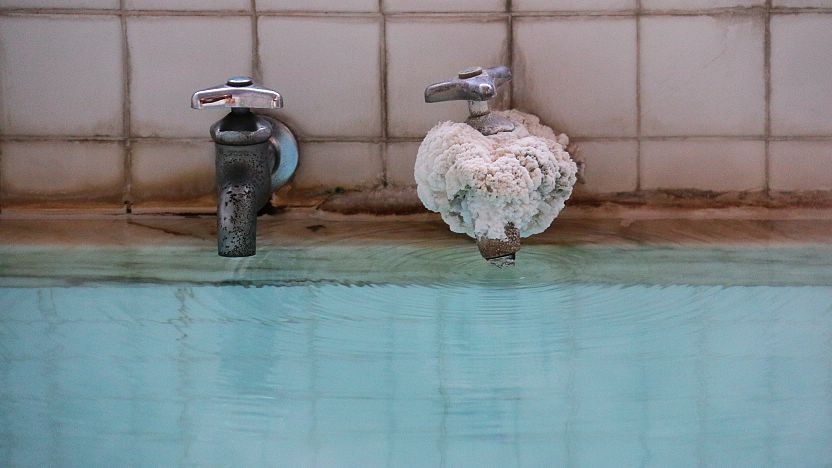Hot Spring Water

There is a tremendous selection of hot springs to enjoy in Japan. At their simplest, they feature water that has been naturally heated underground. Likewise, hot spring water might include a variety of dissolved minerals, which give it different colors, smells and health benefits. Combine that with all the different types of baths, their ambiance and surrounding, and you have a virtually endless number of ways to enjoy hot springs.
What makes an onsen?
Hot spring law defines an onsen to be water, water vapor or other gases that emerge out of the earth at least 25 degrees Celsius (77 degrees Fahrenheit) or with a minimum concentration of certain minerals.
Hot spring sources
Traditionally hot springs were discovered where water naturally emerged from the ground, but with modern technology it is now possible to bore wells several kilometers deep and pump out hot spring water from almost anywhere in the country, which has led to "onsen baths" emerging even in the center of cities where there are no natural hot spring sources. In general, it is possible to classify hot spring sources into the following three types:
- Natural springs that produce water spontaneously from the ground with no boring or pumping required
- Dug or bored wells that produce hot spring water naturally without the need of pumping
- Bored wells that use pumps to bring the hot spring water to the surface

Water types
Below are some of the hot spring water types found in Japan, roughly ordered according to how common they are. Some of them are very strong, fragrant and acidic or alkaline, while others look, smell and feel like regular water. Some are saturated with minerals, while others contain none. Some are drinkable, while others must not be drunk.
- Simple - Simple hot spring water is at least 25 degrees Celsius warm but does not contain enough minerals to meet one of the other categories on this list. Simple hot springs are good for treating ailments such as fatigue, nerve pain, insomnia and high blood pressure among others.
- Chloride - Chloride hot spring water resembles seawater as it contains salt ions. The transparent chloride waters help the body retain heat, and are good for treating muscle and joint pain, cuts, burns, skin ailments and women's ailments.
- Sulfur - These waters are recognized by their sulfurous smell, akin to rotten eggs, and yellowish deposits. Sulfurous hot spring water expands the blood vessels and softens the skin, and as a result they are good for treating acne, skin spots, cuts, diabetes, high blood pressure and joint pain. Note that these waters can be particularly strong and stimulating, so be careful of overexposure.
- Sulphate - Containing calcium, sodium or magnesium sulfates, these types of hot spring waters taste bitter, but are revered for their healing properties. Bathing in sulphate waters is good for treating cuts and bruises and other skin ailments, while drinking them relieves constipation.
- Carbonated - Known for their beautifying effects, these transparent waters feel soft and gentle and make the skin feel smooth. They are used to treat a variety of skin ailments.
- Iron - Containing lots of iron, this type of hot spring water emerges from the ground colorless, but turns brown when it reacts with oxygen in the atmosphere. Iron hot spring water helps retain heat and raises iron levels in the body when drunk, making it good for ailments such as anemia and menstrual disorders.
- Radioactive - Radioactive hot spring waters contain very small amounts of radium or radon which have beneficial effects on the body, such as lowering blood pressure and treating gout, circulatory disease, high blood pressure and rheumatism.
- Acidic - Acidic hot springs are often found in highland areas and are known for their powerful sterilizing properties. Acidic waters are good for the skin, helping with chronic skin disease and women's disorders. On the other hand, those with sensitive skin or weak health should limit their exposure to these types of baths.
- Carbon Dioxide - Carbon dioxide spring water is essentially carbonated with dissolved CO2 gas. The bubbly water tends to be less hot than other hot spring types and is quite rare in Japan. It keeps the body warm and helps to expand blood vessels and lower blood pressure.

Water treatments
While onsen enthusiasts prefer their hot spring water to flow as unchanged as possible from the source into the bath, there are several treatments that are often made to the water before it reaches the bathers.
- Untreated water (gensen kakenagashi)
"Gensen kakenagashi" refers to hot spring water that directly flows from the source into the bath tub generally without treatment or reuse. It is considered the top quality onsen water and available especially in traditional onsen resorts that enjoy abundant amounts of hot spring water.
- Cooling down the water
Some hot spring water is close to boiling at the source and must be cooled down before it can be bathed in. There are several ways to achieve this without affecting the quality of the water, such as by running it through a fountain, waterfall or canal where it can lose some heat before being fed into the baths. Some places cool down the water by mixing it with tap water, but this dilutes the minerals and is frowned upon by onsen purists.
- Heating up the water
Likewise, some hot spring waters emerge at temperatures too low for comfortable bathing. These can be heated up, preferably without diluting the water.
- Adding water
Adding water is done a) to adjust the temperature of hot spring water that is too hot or too cold, b) add volume to the water, for example in case of hot spring sources that are not productive enough to fill an entire bath, or c) to dilute the water, for example, to make it less acidic.
- Recirculating water
Many facilities, especially those that lack an abundant flow of fresh hot spring water, filter and recirculate the water in their baths. Needless to say, these are not considered top-quality baths.
- Adding chlorine to the water
An increasing number of facilities use chlorine to disinfect their bath water, especially modern facilities and facilities that do not enjoy large amounts of fresh onsen water. The chlorine unfortunately leaves a rather undesirable smell and feel in the water.

Questions? Ask in our forum.